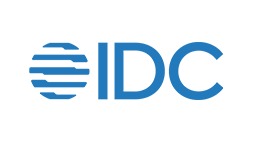Streamline the policy wording, binding, and generation process to minimize losses and penalties by deftly managing complex policies and clause updates. Enable back office and underwriting teams with self-service access to the wording library. Improve process efficiency with features such as template libraries, clause libraries, rule definition, and strong integration capabilities with core systems.
Features of Newgen Policy Wording and Clause Management Software
Comprehensive Clause Library
Ability to update wordings, clauses, and definitions with complete version control. Options to apply different rules, including show, hide, and replace, on wordings to handle multiple products and endorsements. Easy search from central wordings and clause library. Maker-checker workflows to review and approve modifications to the library. End-to-end monitoring, control, and auditability of changes to wordings, definitions, and clauses.
Dynamic Template Library
In-built dynamic text editor for creating new templates. Support for uploading existing templates into the system. Ability to automatically add words associated with endorsement/product type in policies. Low code approval workflows. Central document template library for simplified production of customers’ documents while following corporate guidelines.
Seamless Policy Creation
Detailed view of the rules applied at the time of policy generation. Rule-based policy/wording/clause editing by designated users. Seamless integration with the core policy administration system for fetching the client/coverage/endorsement details, selecting the corresponding template, and applying the relevant wording rules based on the selected coverages. Support for API and batch-based integration to get the metadata required for policy generation.
Organizations in regulated industries that have a complex set of content-centric workflows and want to explore AI-driven automation with governance guardrails should explore Newgen.
The Forrester Wave™: Content Platforms, Q1 2025

Streamlining Operations with Newgen OmniDocs and Fadata INSIS Integration
Handle quotes, policies, and claims while staying compliant with regulatory mandates through Newgen OmniDocs x Fadata Integration. WATCH an insightful demo to discover how integrating Newgen OmniDocs with Fadata INSIS can transform your organization’s content management strategy.
Solutions Built On NewgenONE Platform for Insurance Firms
Horizontal Platforms for Insurance Providers
Brands using Newgen Platform





Brands using Newgen Platform



Accelerate Policy Generation with the Power of AI
Stay Compliant and Mitigate Risks with Policy Binding and Clause Management Solution

























